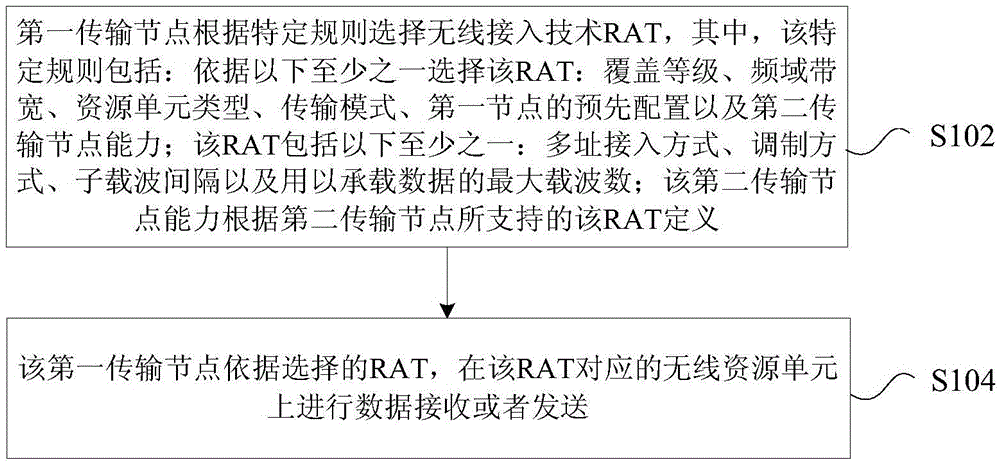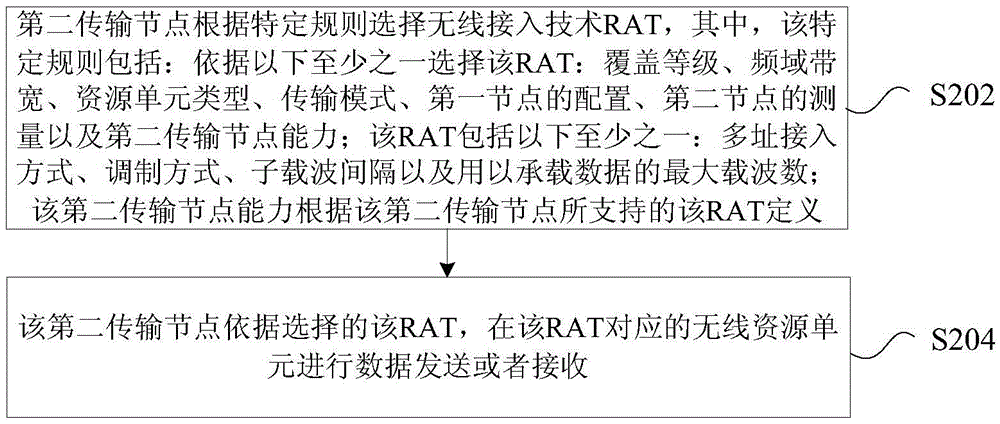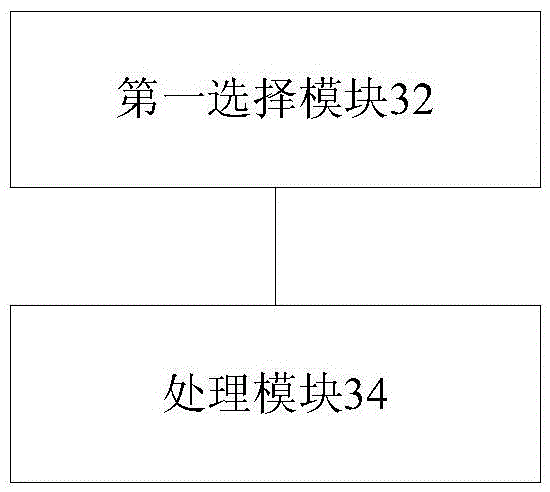Data processing method based on radio access technology (RAT) and transmission nodes
A wireless access technology and a technology for transmission nodes, which are applied in the field of data processing methods and transmission nodes based on wireless access technology, and can solve problems such as no effective solutions.
- Summary
- Abstract
- Description
- Claims
- Application Information
AI Technical Summary
Problems solved by technology
Method used
Image
Examples
Embodiment 1
[0209] Preferred embodiment 1: includes 3 sub-embodiments.
Embodiment 11
[0211] This embodiment assumes LTE-IOT uplink transmission. Figure 5 It is a schematic diagram of the preferred implementation of the timing relationship on the base station side according to the present invention Figure 1 ,Such as Figure 5As shown, in a period of time domain resources, the first resource unit ReEl 1, the third resource unit ReEl 3, the second resource unit ReEl 2, the fourth resource unit ReEl 4, and the first resource unit ReEl1 increase with time. The base station adopts FDMA mode and SC-OFDMA mode to receive and process data on ReEl 1 and ReEl 2 respectively. ReEl 3 and ReEl 4 are guard intervals, and the time lengths are T3 and T4 respectively. The guard interval design mainly considers the switching delay between different multiple access modes of the base station and the timing requirements of uplink transmission. In this embodiment, T3>T4. The reason is that T3 takes into account the handover delay and timing. T4 only considers the switching dela...
Embodiment 12
[0213] This embodiment assumes that on a period of time domain resources, Figure 6 It is a schematic diagram of the preferred implementation of the timing relationship on the base station side according to the present invention Figure II ,Such as Figure 6 As shown, the increase over time is the first resource unit ReEl 1, the third resource unit ReEl 3, the second resource unit ReEl 2, the fourth resource unit ReEl 4, and the first resource unit ReEl 1. The base station adopts time domain code division mode and SC-OFDMA mode to receive and process data on ReEl 1 and ReEl 2 respectively. ReEl 3 and ReEl4 are guard intervals, and the time lengths are T3 and T4 respectively. The design of the guard intervals is mainly to consider the switching delay between different multiple access modes and timing requirements. T3=T4 in this embodiment. T3 and T4 take into account the switching delay from ReEl1 to ReEl 2 and from ReEl 2 to ReEl 1, as well as timing requirements. In this ...
PUM
 Login to View More
Login to View More Abstract
Description
Claims
Application Information
 Login to View More
Login to View More - R&D
- Intellectual Property
- Life Sciences
- Materials
- Tech Scout
- Unparalleled Data Quality
- Higher Quality Content
- 60% Fewer Hallucinations
Browse by: Latest US Patents, China's latest patents, Technical Efficacy Thesaurus, Application Domain, Technology Topic, Popular Technical Reports.
© 2025 PatSnap. All rights reserved.Legal|Privacy policy|Modern Slavery Act Transparency Statement|Sitemap|About US| Contact US: help@patsnap.com



